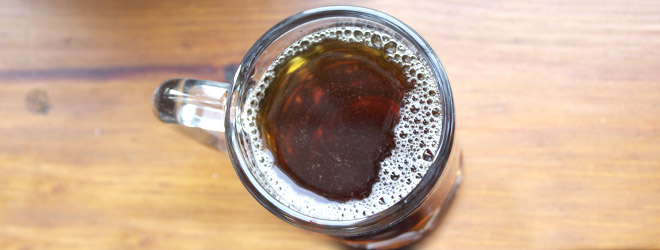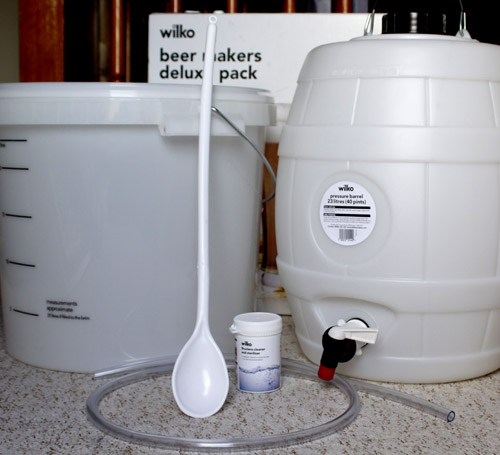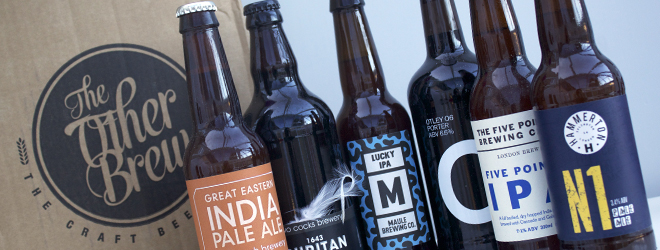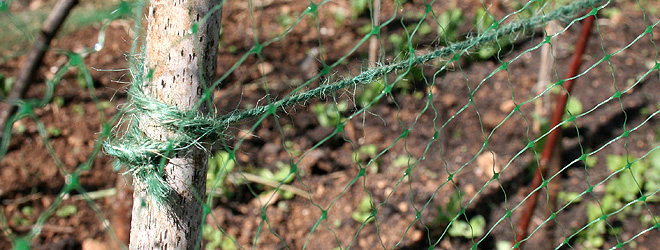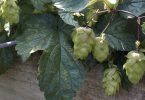For many people, their first foray into home brewing will be with a simple beer kit. All the ingredients you’ll need condensed into one large tin: just add water and allow it to brew.
Even if you fancy progressing to more sophisticated craft brewing techniques with wholesome, raw ingredients, starting with a kit will give you a good feel for the process at a relatively low cost – and with a few easy tips you can even customize your brew to raise the quality of the finished beer way above its basic level.
We’ve shared our favourite beer-pimping tips below, but first you’ll need to get some equipment…
What will I need for my first home brew kit?
Besides the actual beer-making substance (the ‘extract’), you’ll need some basic hardware. The most cost effective solution is to seek out a home brew beer supplier and get the lot in one handy package, but you can buy them individually if you prefer. Ours came from Wilko and contains the following:
• Fermenting bucket
This is where the main action happens so it needs to be big enough to contain all your beer (usually up to 40 pints), with some headspace for the large, frothy head that develops during fermentation (technical name: krausen).
• A big spoon
Combining your beer extract with water is an important task, not just to ensure an even mix but also to get plenty of oxygen into the liquid prior to fermentation. So a stirring spoon must be long enough to reach the bottom of the beer.
• Storing vessel
You have two options here… bottles or a barrel. Beer bottles are readily available to buy, although we prefer to recycled used bottles (a perfect excuse for drinking more beer), but cleaning and bottling 40 pints can be a bit of a chore. So for this volume we suggest a barrel with a tap and a good, tight fitting lid.
• Siphoning tube
This will enable you to transfer the beer from bucket to barrel, leaving behind the yeasty sediment.
• Sterilising solution
All equipment that comes into contact with you brew must be thoroughly sterilised to avoid devastating infections that can ruin your brew and alienate your friends. Our Wilko package includes a decent dose of the stuff, but not all suppliers are as thoughtful so do check first
Once you’ve got that little lot you’ll be ready to open up a tin of extract and start brewing. Most kits are created with lazy brewers in mind, generally involving nothing more troubling that mixing the extract with water, adding some sugar to bring up the alcohol strength (not provided) before sprinkling on some yeast to start fermentation (usually provided). Kits come in a variety of flavours and styles, including approximations of some popular brands, but if you want to improve your brew and create something new then check out our top brewing tips.
Five ways to pimp up your beer kit
1. Sugar substitutes
If your instructions ask you to add sugar to your mix, act like a brewing nerd and scoff at the thought. Instead, use the same quantity of Dry Malt Extract. This will contain the same amount of sugar but will also add an extra layer of authentic malty flavour to your beer. It comes in a range of shades, from extra light to dark, to match whatever style you’re producing.
2. Fresh hops
Hops boiled into canned extracts can rarely compete with the power of fresh hops, particularly if a potent hoppy aroma is required. So get some good aroma hops and boil them up with the extract for a few minutes (putting them in a ‘hop bag’ will help with easy removal). We suggest this is essential if you’re brewing an IPA.
3. Water
It’s often taken for granted, but the main ingredient in beer is water. Most styles prefer a soft water to the hard stuff that comes out of may kitchen taps – so if you’re in a hard water area consider buying large tubs of bottled water instead.
4. Grains
You can really get a feel for a more professional approach to brewing by adding a few speciality grains to the mix. What you choose depends on the beer you’re trying to create. Heavily roasted grains for dark brews such as porters and stouts; crystal malts to bring a touch of malty sweetness to various beer styles; or a wheat flakes to add some starchy body and head retention. You’ll need to do a bit of research to find out how to use these grains, but it usually involves steeping them in hot water for 20 minutes before straining the liquid into the rest of your brew. If you’re using grains to create a particular style then we suggest you use a simple pale malt extract kit as a base and build from there.
5. Adjuncts
An adjunct is anything beyond the usual brewing ingredients added to the beer. Craft brewers have gone mad for off piste flavours, throwing in anything they can get their hands on – spices like ginger and vanilla; fruity ingredients from cherries to orange peel; and oddities including nettles, hibiscus flowers and coffee. Extract kits give you the perfect opportunity to test drive some of your own wacky flavours – because you wouldn’t want to spoil a full grain brew with an experimental bag of mushrooms, would you?
http://www.wilko.com/homebrew/cider+beer-brewing/icat/homebrewbeer
Note: We tried our luck with this one and asked Wilko if they would mind sending us the kit featured in this post. They kindly obliged.


